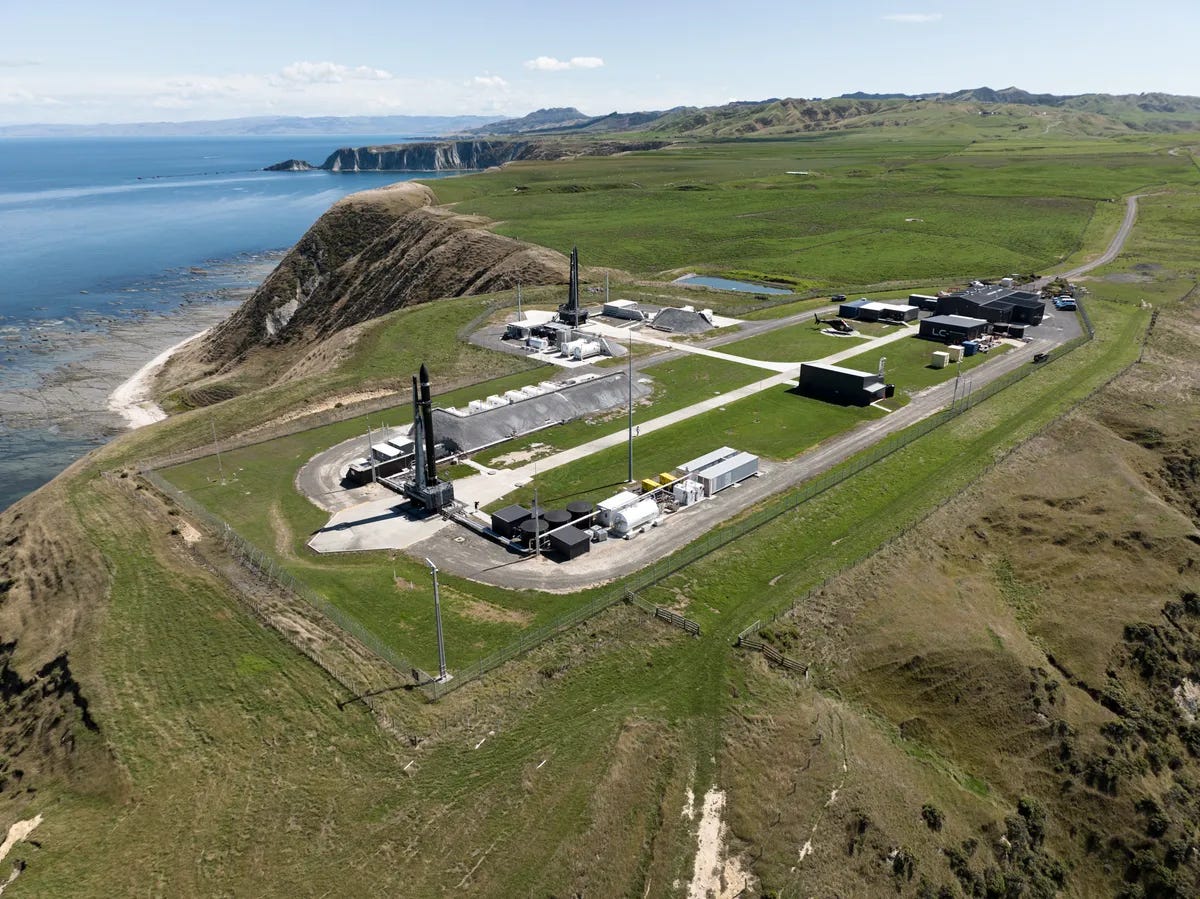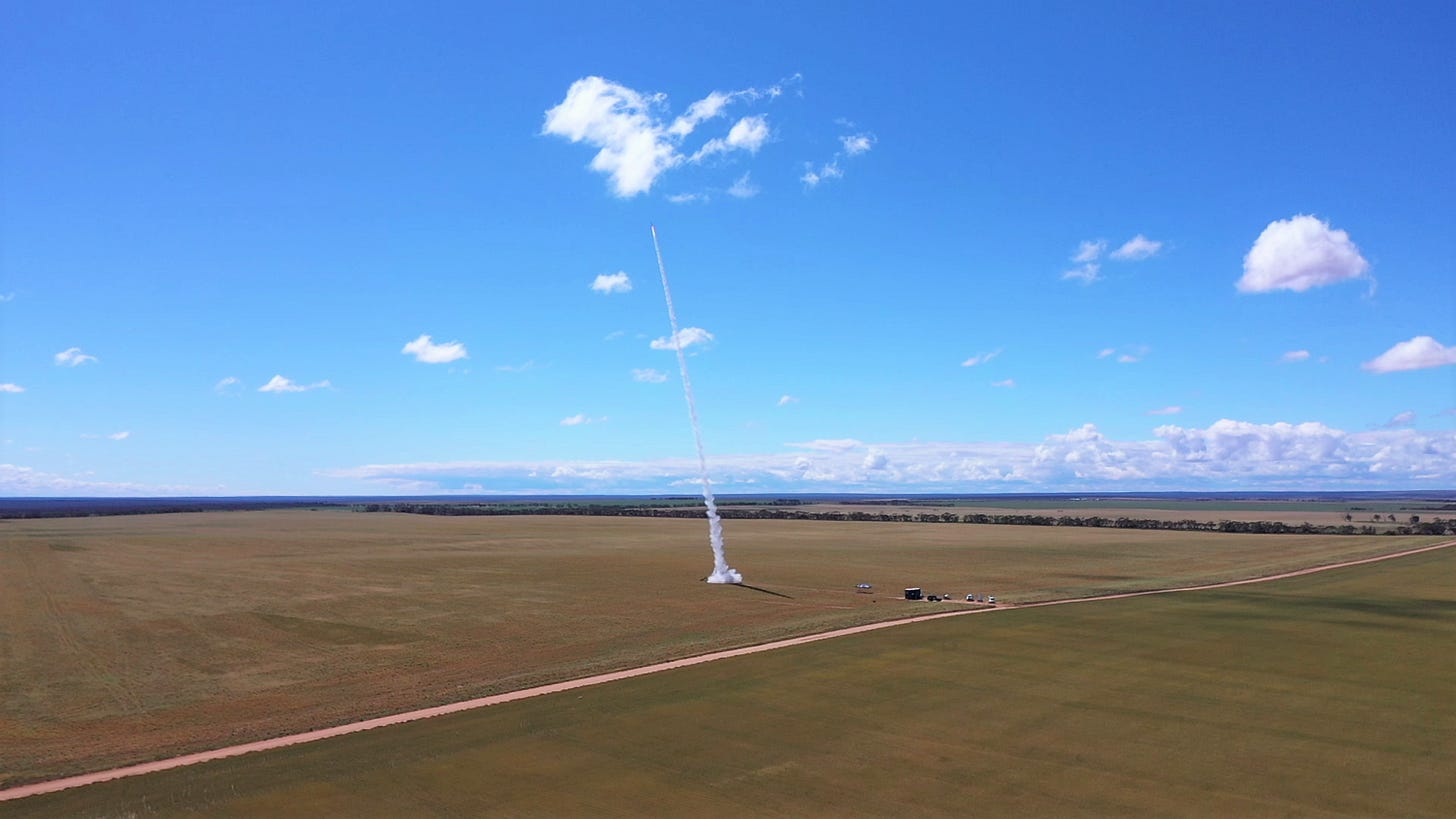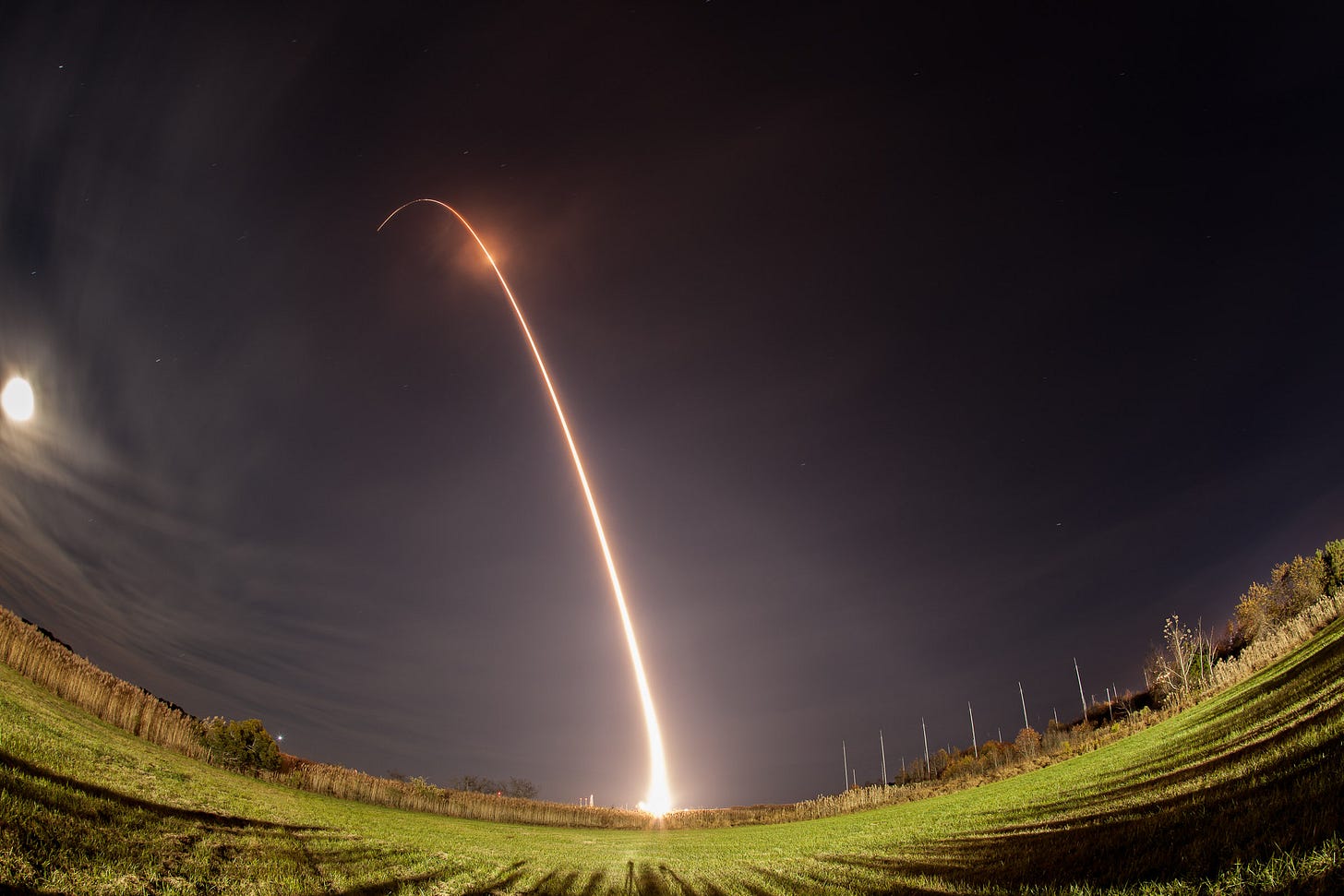Gateways to the Cosmos: From Gigantic Spaceports to Unconventional Methods of Reaching Space
46 active launch sites worldwide! Why the equator preference? What are the largest and smallest spaceports? Discover why China eyes African spaceports.
Issue No 50. Subscribers 7621. With insights from the UK Space Agency.
According to our estimates, there are at least 66 launch sites (46 operational and 20 that are no longer in use), and 26 more that are in the proposal or later development stage. There are 3 operational sites in Europe (including the UK), 15 in North America (all in the US), 21 in Asia (including 4 in China, 5 in Japan, 3 in India, and 3 in Russia), 3 in South America, and 4 in Australia and Oceania. Here is a nice example of a launch site list in the format of a map. Mind that it is not comprehensive, as the new launch facilities spring up like weeds. Surprised? Let's delve deeper into the fascinating world of launch sites.
What is a Launch Site? Infrastructure and Necessities
A launch site is a specific area designated for launching spacecraft. It's part of a larger complex which could either be a “spaceport”, a “cosmodrome” or a “rocket launch facility”, depending on the scale and scope. A spaceport is essentially an upgraded version of a launch site, equipped to handle not just satellite launch missions but also human spacecraft, commercial, and potentially even civilian space travel.
Critical to any launch site or spaceport is the infrastructure—launch pads, vehicle assembly buildings, control centers, tracking stations, liquid propellant storage, and, in some cases, production facilities, and more. Equally vital are prohibited areas—buffer zones to ensure public safety. These zones vary in size depending on the type of launch, but they typically extend up to 80 miles away from the launch pad.
A Bit of History: The Titans of Spaceports
Baikonur, situated in Kazakhstan and operated by Russia until 2050, is the first and largest spaceport in the world. It was here that Sputnik was launched in 1957, followed by the first human, Yuri Gagarin, in 1961. With 15 launch pads and an area of 6717 sq. km, it's a behemoth in the world of space exploration. Compare it to London (1569 sq. km) and Tokyo (2191 sq. km) areas.
The busiest spaceport in 2022 was Cape Canaveral Space Force Station in the USA, with 39 launches a year. It was also America's first spaceport and has been the launching site for iconic missions like Mercury, Gemini, and early Apollo. It hosts multiple launch pads, tailored to various types of missions. It is one of 4 launch sites used by SpaceX (together with Vandenberg Space Force Base, Kennedy Space Center, and SpaceX Starbase in Boca Chica).
These two giants represent the older generation—massive, state-owned facilities with centralized infrastructures serving multiple launch pads.

The New Wave: Small Satellites, Small Rockets, Small Spaceports
With the advent of private aerospace companies, the landscape is changing dramatically. The focus is shifting towards smaller satellites, smaller rockets, and consequently, smaller spaceports or individual launch pads operated privately. Their construction costs vary substantially depending on the scale of the rockets launched. The cost of Sutherland Spaceport in Scotland, a £17.3 million project (approx. $ 22 million), is a good guideline. This new model explains why there are more operational launch sites than one might expect.
Rocket Lab’s Launch Complex 1 on New Zealand’s Mahia Peninsula offers a glimpse of the median spaceport of today. Having the size of a football field, it is the first private spaceport to host a successful orbital launch (2018) and the first spaceport in the southern hemisphere. It specializes in small satellite launches via its Electron rocket and takes up a relatively modest area (two launch pads). There have been 36 successful orbital launches from this site already.

Koonibba Test Range in Australia is, probably, the smallest space launch facility in the world (just look at the photo to get an idea of its size). In 2019, Southern Launch, a private aerospace firm, engaged in consultations with the Koonibba Community Aboriginal Corporation before establishing their test range, which spans 145 kilometers. The site therefore benefits from an expansive recovery area. Local community members have been hired to both establish and manage the range. There was one successful suborbital launch in 2020 from this site. Just recently, in August 2023 the local authorities granted permission for Southern Launch to upgrade the Koonibba Test Range to become a permanent suborbital launch facility.

With the rise and flourishing of private launch companies, some unexpected territories become especially favorable for launching small satellites. As a spokesperson at UK Space Agency explains:
“Geographically advantageous, the UK’s long coastline and island location make it unique in easily hosting different types of launch services including traditional vertically launched vehicles, air-launched vehicles, sub-orbital spaceplanes, and balloons.
There are seven proposed spaceports in the UK, each with its own unique capabilities and offerings – well-placed to capture the growing demand for small satellite launches. Scotland is the best place in the UK to reach in-demand satellite orbits with vertically launched rockets. Spaceplanes and other space transportation can be launched at several aerodromes around the UK. Details of each of the spaceports currently under development can be found in our Spaceport Brochure.
As set out in the National Space Strategy, our vision is for the UK to be the leading European provider of small satellite launches by 2030. Harnessing the opportunities provided by commercial spaceflight will create high-skilled jobs and local opportunities around UK spaceports while inspiring the next generation. We are funding a range of industry-led projects to build new UK launch capabilities including £31.5m to establish launch services in Scotland. We have also supported several airports to develop business plans to offer space launch services.
Construction is well underway at SaxaVord Spaceport in Shetland and Sutherland Spaceport on the Scottish mainland. These facilities will enable vertical launches to take place from the end of 2023 onwards. UK-based launch provider Orbex will launch from Space Hub Sutherland, and several international companies are due to launch from SaxaVord, including Lockheed Martin, ABL Space Systems, Rocket Factory Augsburg (RFA), and HyImpluse.”
Weird Ways to Launch
Sea Launch. Initially, a consortium of four companies from Norway, Russia, Ukraine, and the United States, used a mobile maritime launch platform for equatorial launches of commercial payloads. The consortium is now inoperational, although the use of mobile offshore platforms and ships remains attractive in the future.
Air-launch-to-orbit. Virgin Galactic employs aircraft to air-launch its SpaceShipTwo vehicle. The company operates out of Spaceport America in New Mexico, using a mothership called WhiteKnightTwo. Although Elon Musk is skeptical about this way of launch, there are considerable fuel savings due to the avoidance of flying in dense layers of the atmosphere, and the use of rocket engines optimized for a rarefied atmosphere. As there are more projects in the past and future (Skylon, Stratolaunch, Virgin Orbit, Pegasus, etc.), we will cover this topic in one of our future posts.
Balloon Launch. Companies like Zero2Infinity aim to use balloons to carry payloads to high altitudes, where a secondary propulsion system would then ignite to reach orbital or suborbital trajectories.
Spin Launch. SpinLaunch, a startup company, is pioneering a unique launch system that uses rotational energy to hurl payloads into space. Though still in development, the concept could significantly reduce the cost of launching satellites.
Looking to the Future: Globalization of Spaceports
Interestingly, some countries and companies are looking to establish spaceports far from their home territories. Reasons vary from proximity to the equator, legal reasons as seen with China's plans for a $1 billion spaceport in Djibouti (this African country is not covered by some space obligations that restrict China), to geographical limitations like insufficient buffer zones in the mainland, or combination of various factors — as is the case with Turkey (a $350 million spaceport planned in Somalia).
Launching rockets near the equator while heading eastward takes full advantage of the Earth's rotational speed, measured at 465 meters per second at the equator. This provides a boost amounting to 6% of the orbital speed needed. While this kind of launch path is particularly advantageous for reaching a geostationary orbit, it offers little benefit for orbits that are near-polar. European Space Agency's complex in French Guiana is a prime example of a spaceport far moved from the mainland for closer proximity to the equator.
In the future, we will see more gargantuan complexes like Baikonur or Cape Canaveral. They are inevitable if we want to build bases on the Moon and conquer Mars. Space X Starbase proves this idea. This spaceport, production, and development facility for Starship rockets is still under development but already competes with Kennedy Space Center in scale.
At the same time, we will undoubtedly witness the proliferation of smaller, specialized launch sites catering to the growing demand for space access. From massive state-owned facilities to emerging private platforms, the realm of launch sites is more dynamic and diverse than ever. With 46 operational sites and counting, who knows what the future landscape will look like? One thing is certain: whether big or small, these spaceports are the gateways to the final frontier.
If you have something to say on the topic, don’t hesitate to leave your comment below or send us an email via hello@spaceambition.org.







